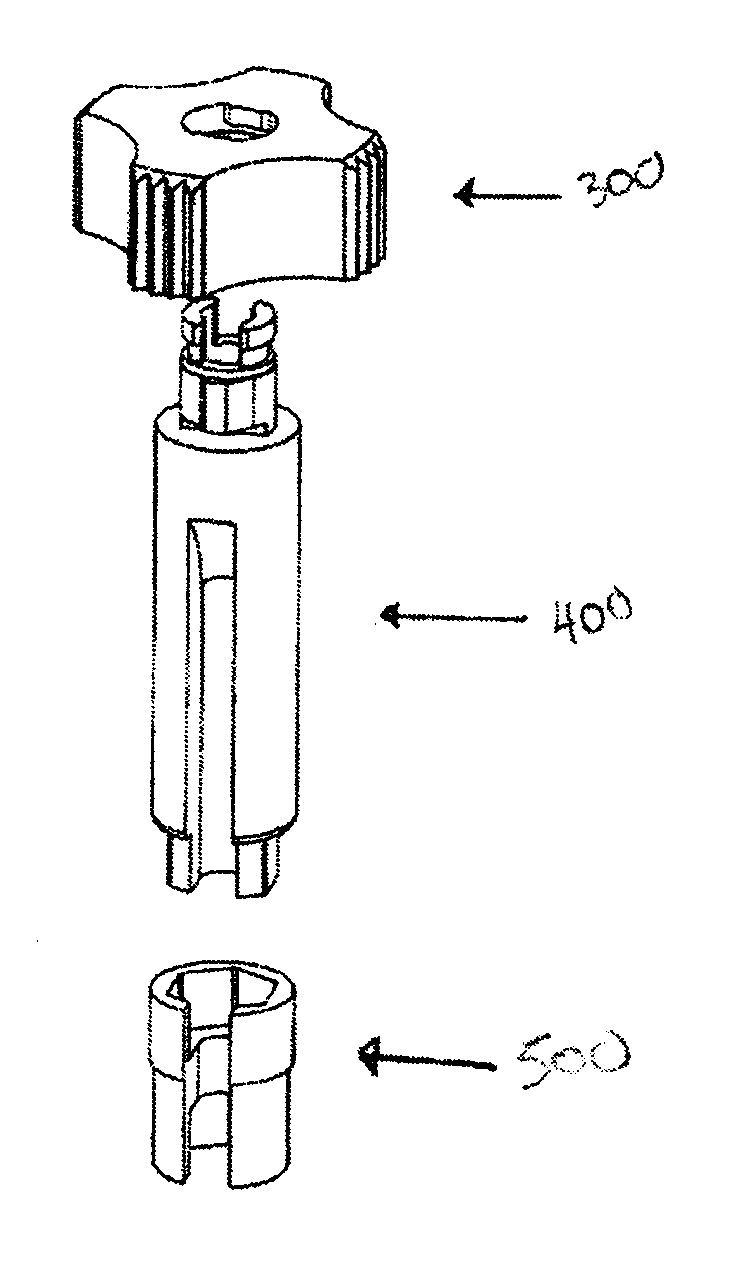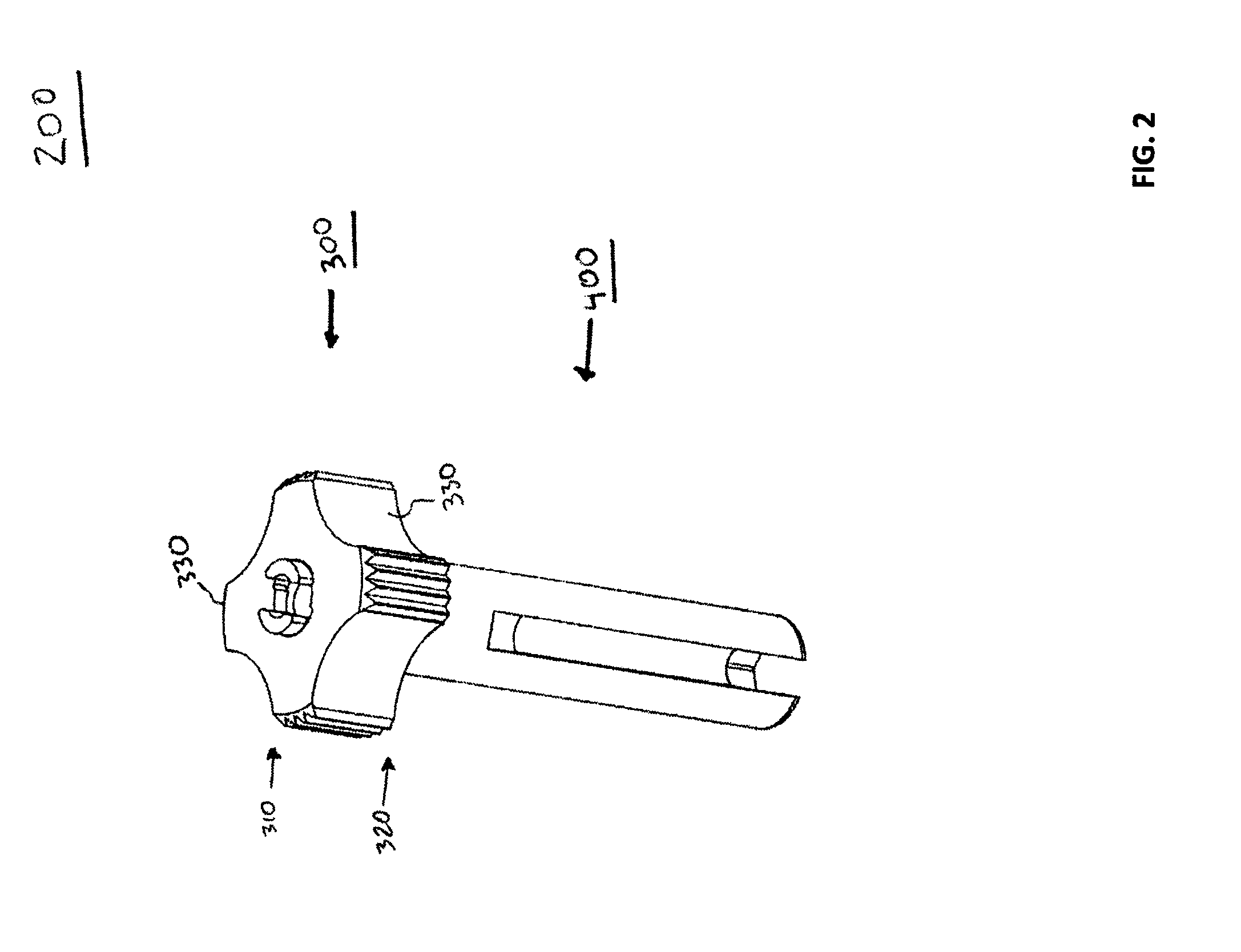Torque Limiting Tool and Methods
a technology of torque limitation and tool, applied in the direction of couplings, manufacturing tools, slip couplings, etc., can solve the problems of wasting time and inefficiency, affecting the performance of the system, and affecting the reliability of the system
- Summary
- Abstract
- Description
- Claims
- Application Information
AI Technical Summary
Benefits of technology
Problems solved by technology
Method used
Image
Examples
Embodiment Construction
[0044]In FIG. 1, a block diagram of certain elements of a conventional liquid chromatography (LC) system is provided. A reservoir 101 contains a solvent or mobile phase 102. Tube 103 connects the mobile phase 102 in the reservoir 101 to a pump 105. The pump 105 is connected to a sample injection valve 110 which, in turn, is connected via tubing to a first end of a guard column (not shown). The second end of the guard column (not shown) is in turn connected to the first end of a primary column 115. The second end of the primary column 115 is then connected via tubing to a detector 117. After passing through the detector 117, the mobile phase 102 and the sample injected via injection valve 110 are expended into a second reservoir 118, which contains the chemical waste 119. As noted above, the sample injection valve 110 is used to inject a sample of a material to be studied into the LC system. The mobile phase 102 flows through the tubing 103 which is used to connect the various elemen...
PUM
| Property | Measurement | Unit |
|---|---|---|
| Fraction | aaaaa | aaaaa |
| Fraction | aaaaa | aaaaa |
| Length | aaaaa | aaaaa |
Abstract
Description
Claims
Application Information
 Login to View More
Login to View More - R&D
- Intellectual Property
- Life Sciences
- Materials
- Tech Scout
- Unparalleled Data Quality
- Higher Quality Content
- 60% Fewer Hallucinations
Browse by: Latest US Patents, China's latest patents, Technical Efficacy Thesaurus, Application Domain, Technology Topic, Popular Technical Reports.
© 2025 PatSnap. All rights reserved.Legal|Privacy policy|Modern Slavery Act Transparency Statement|Sitemap|About US| Contact US: help@patsnap.com



